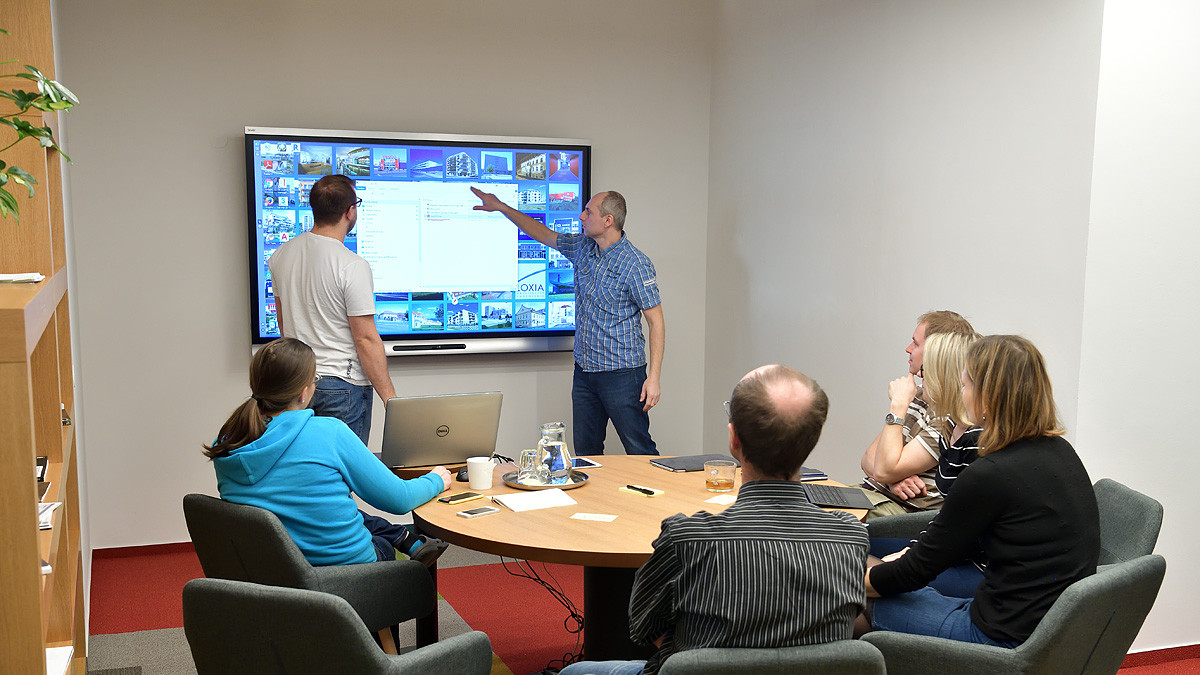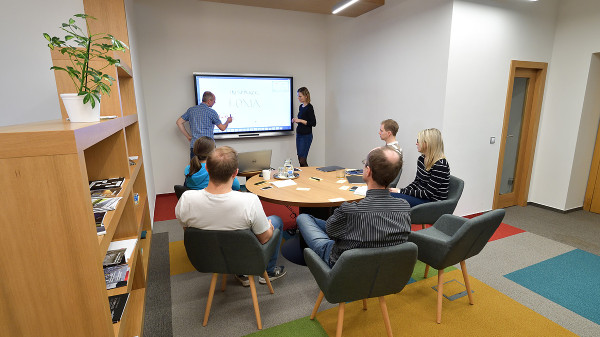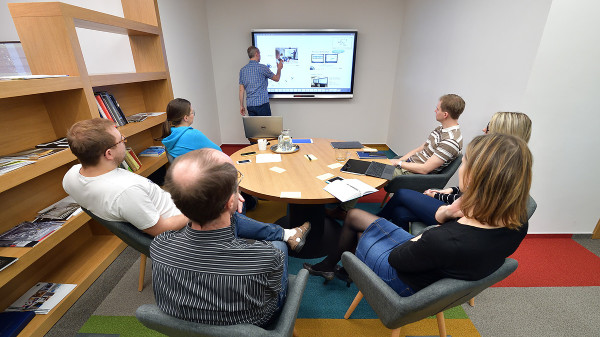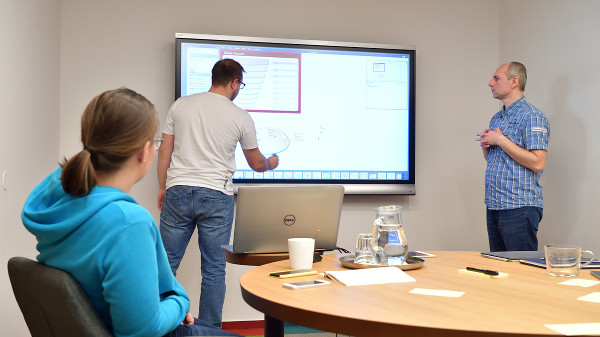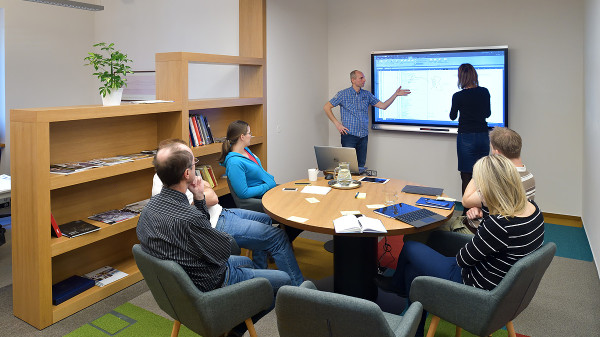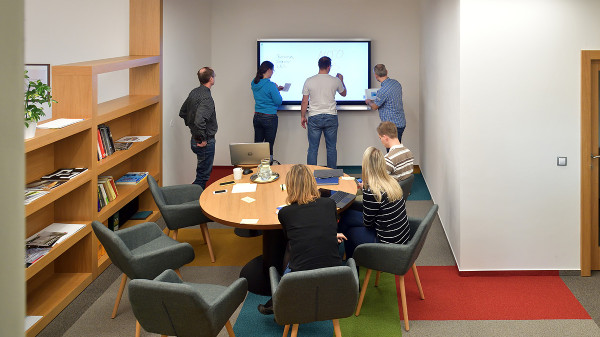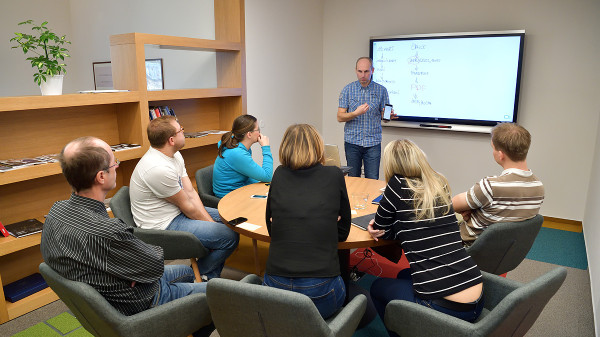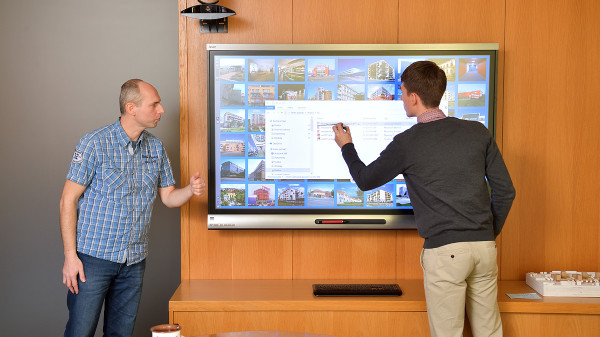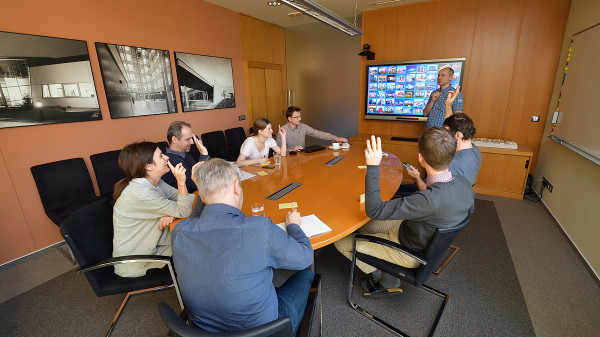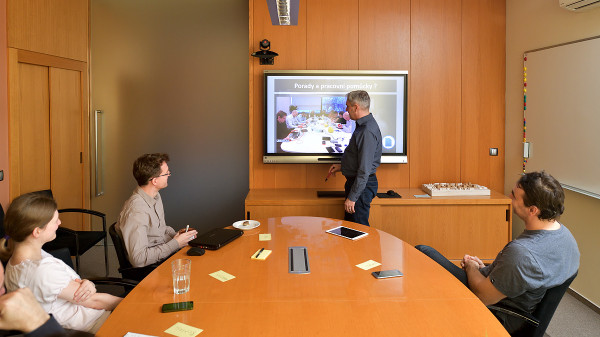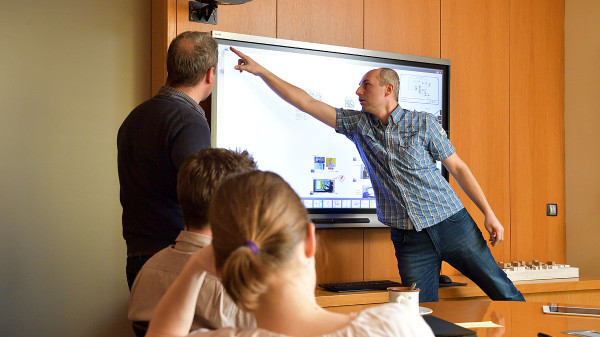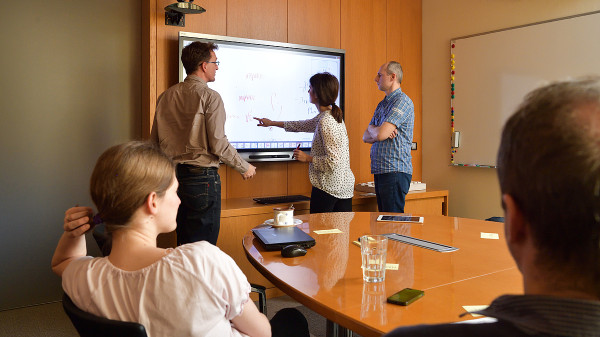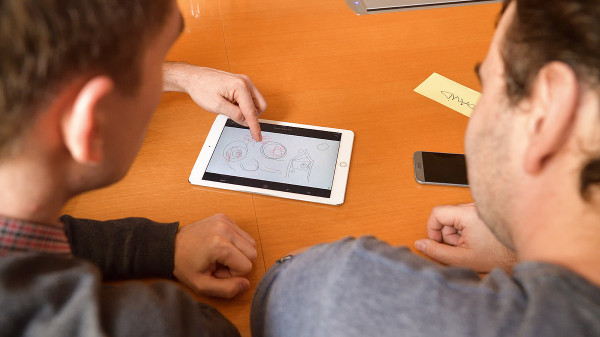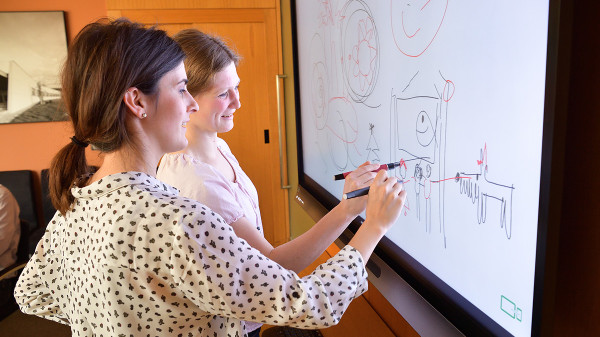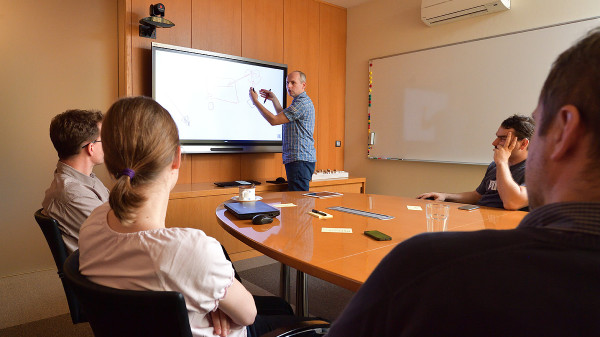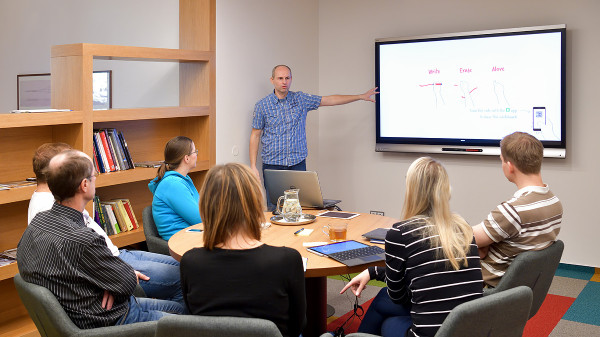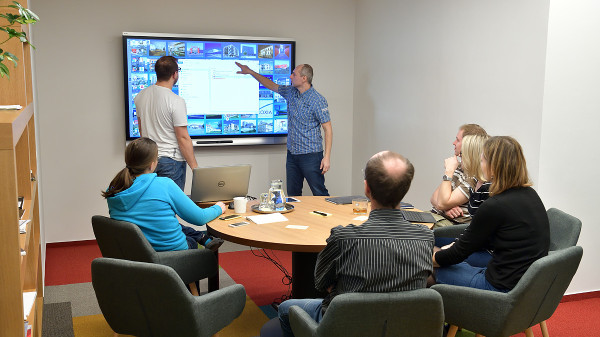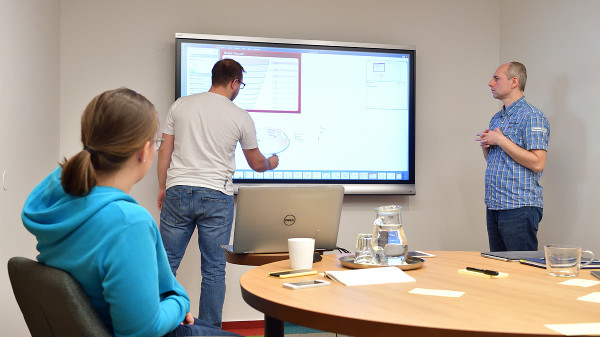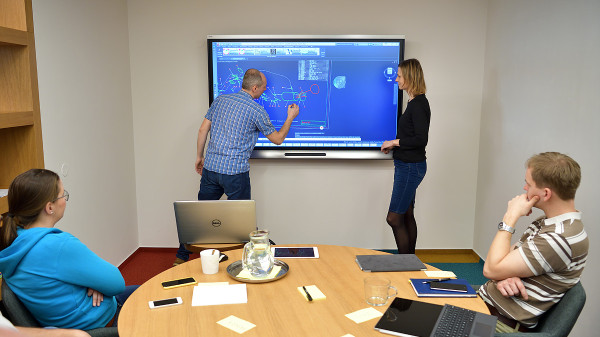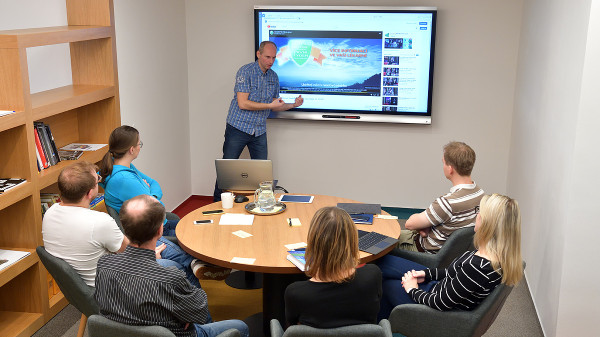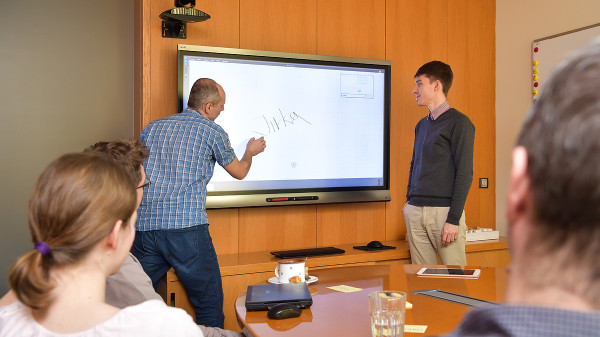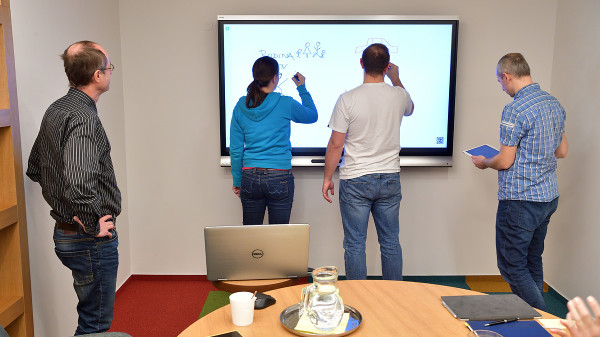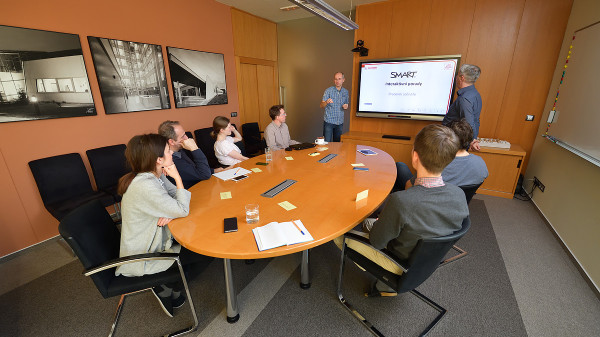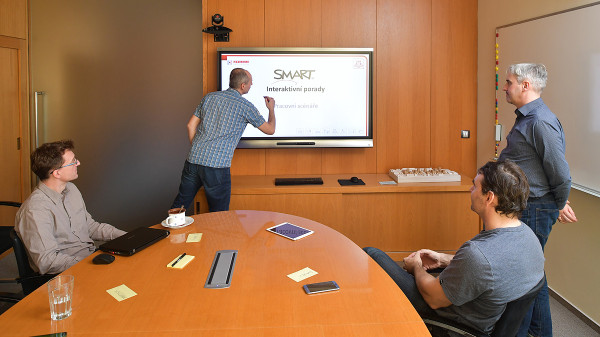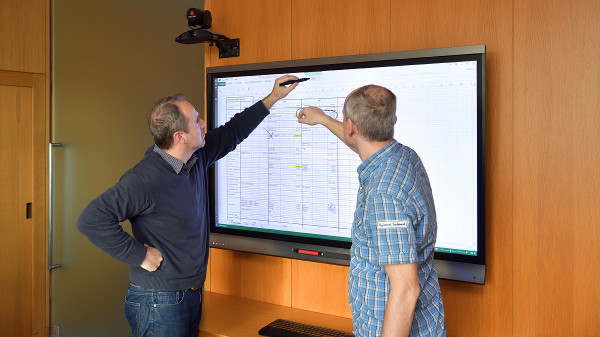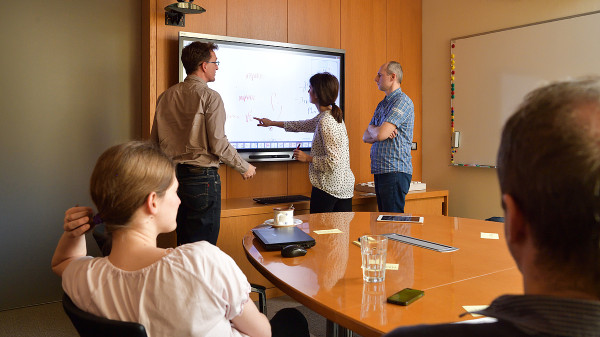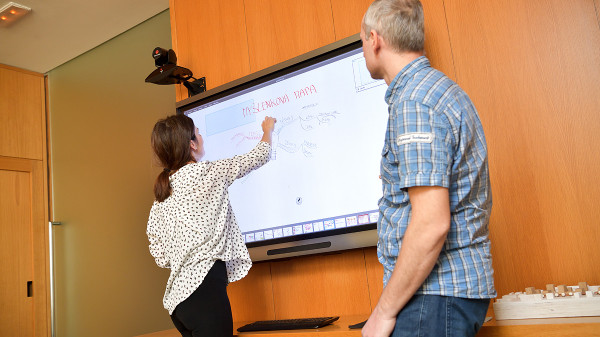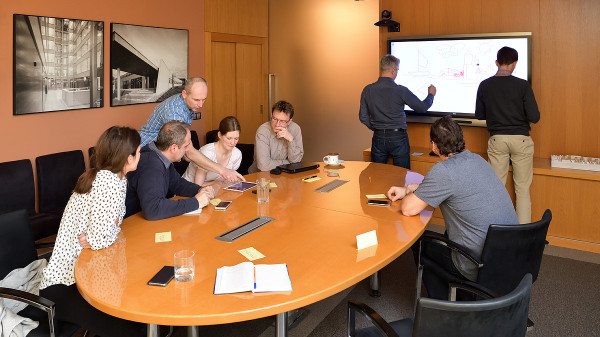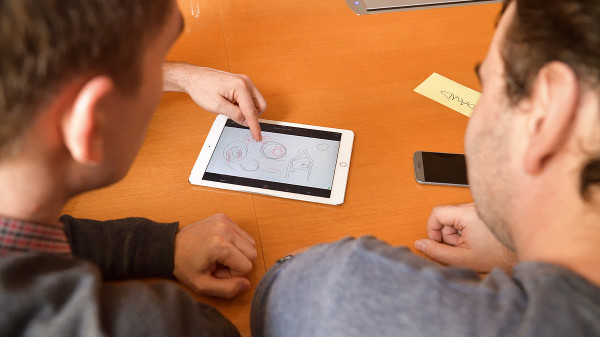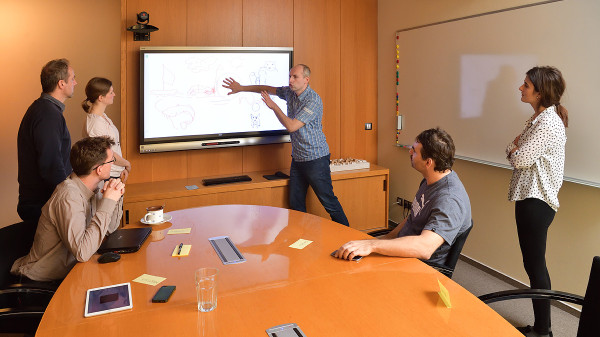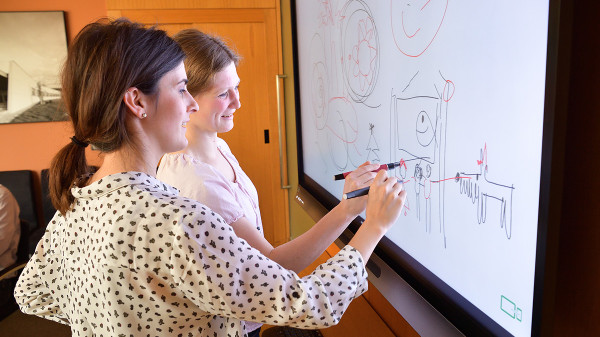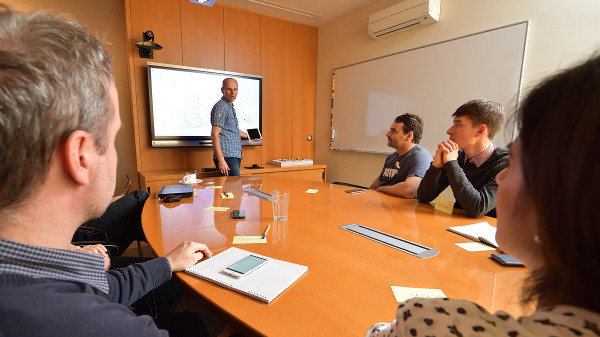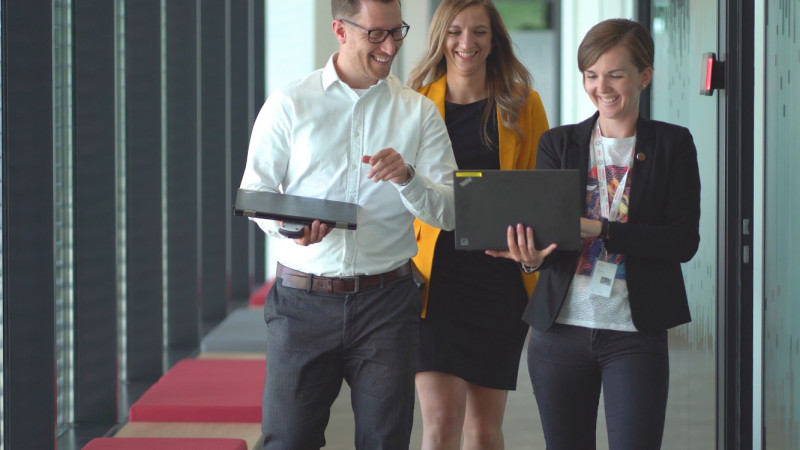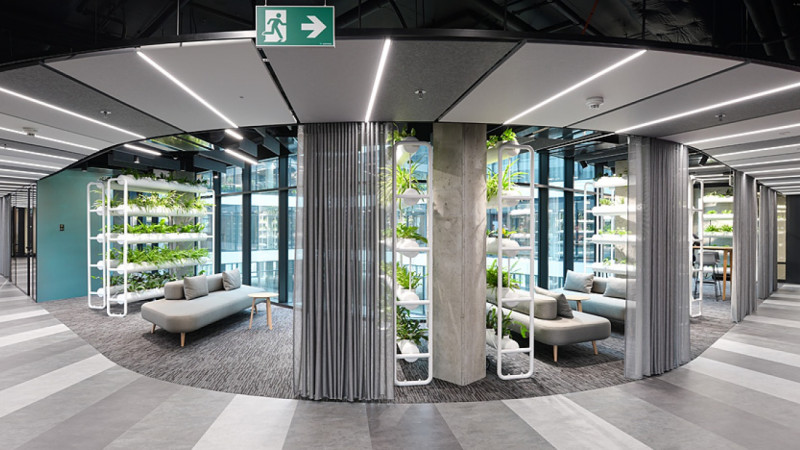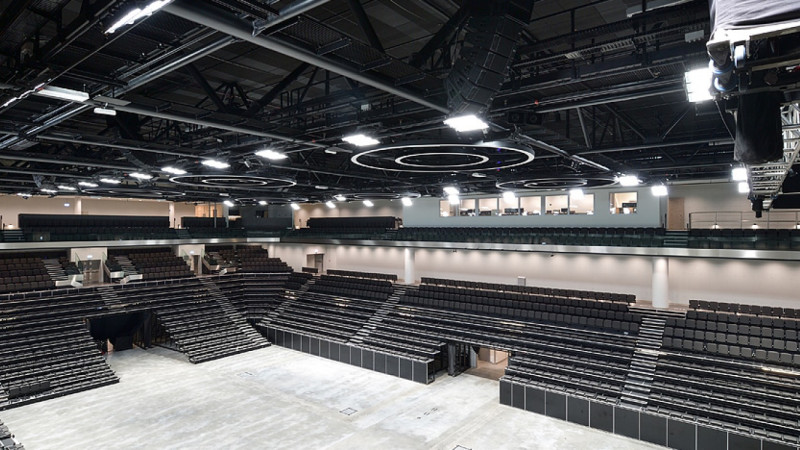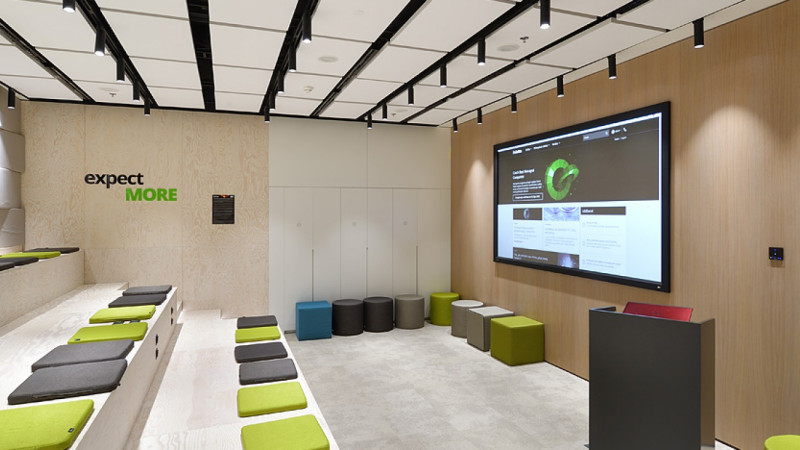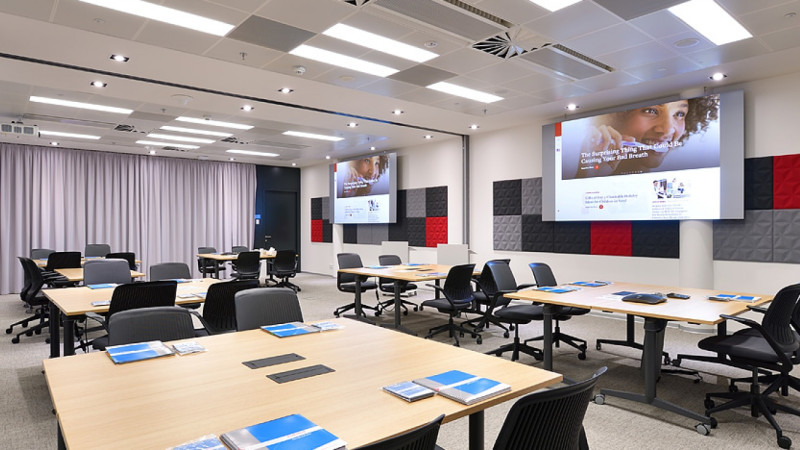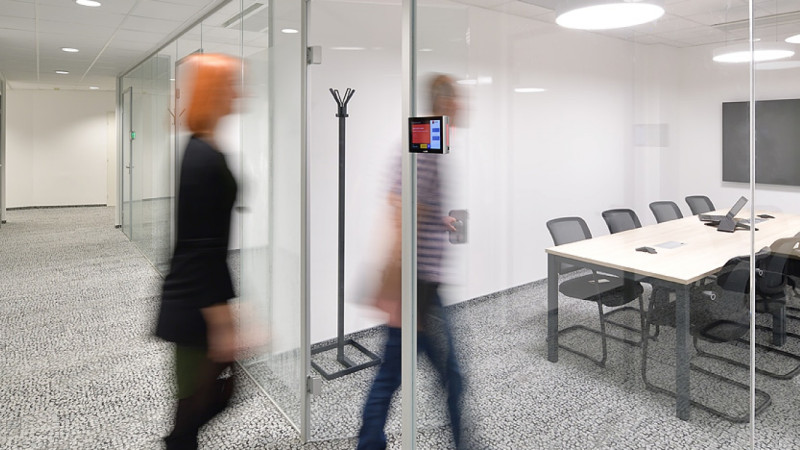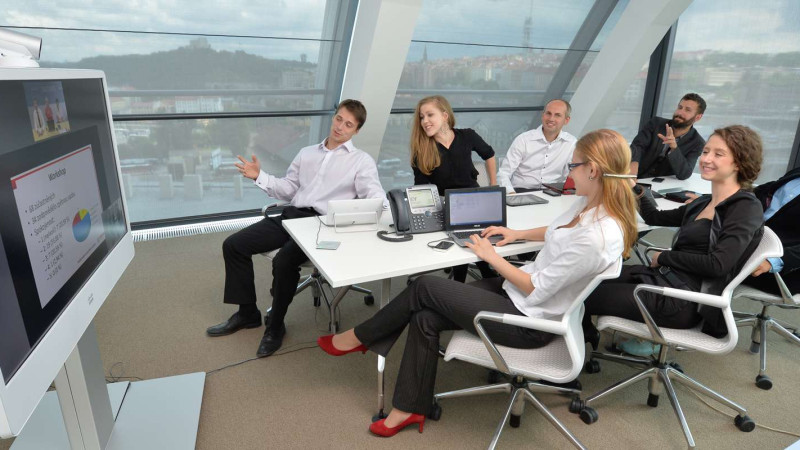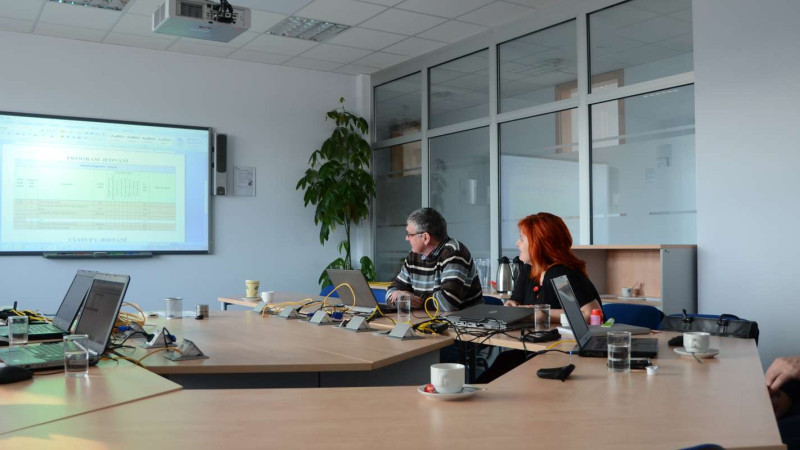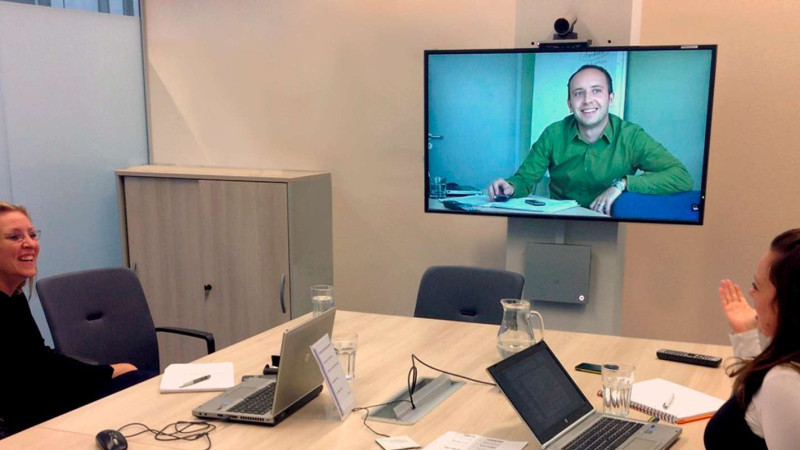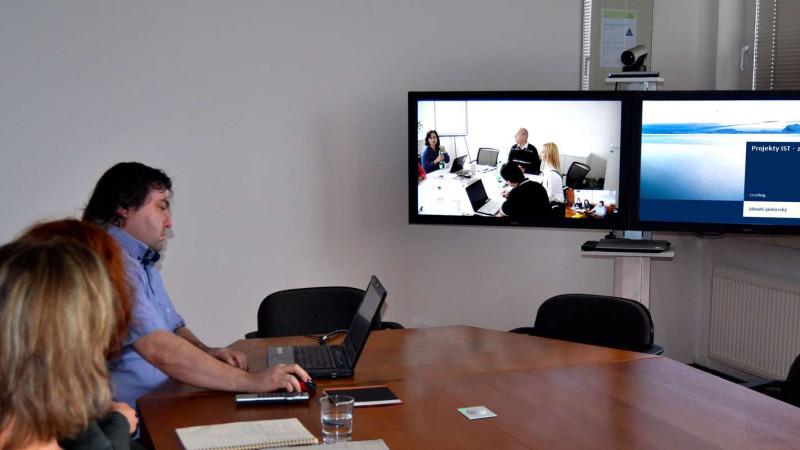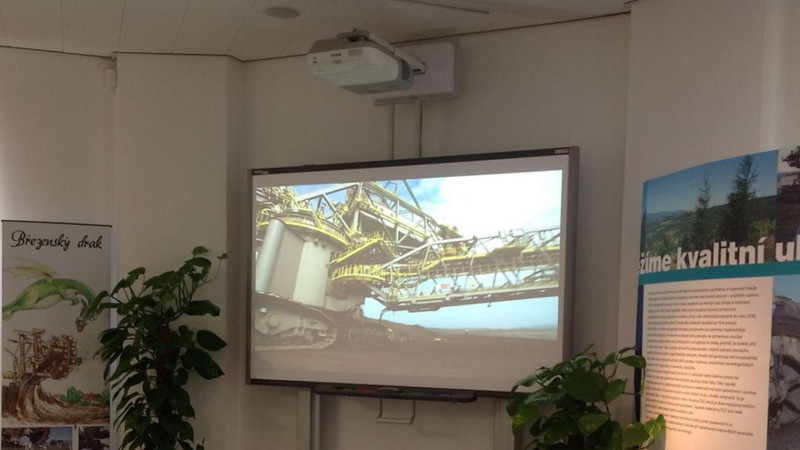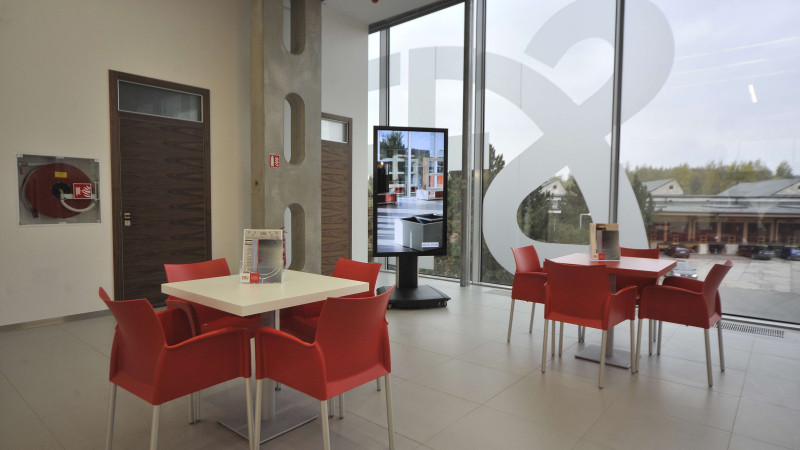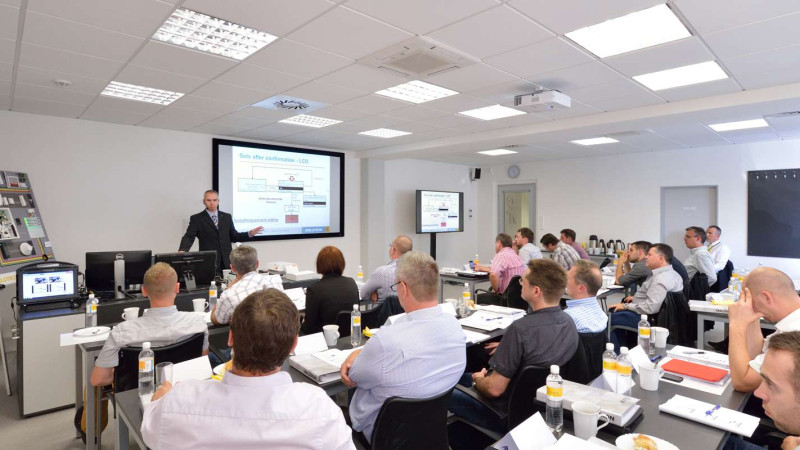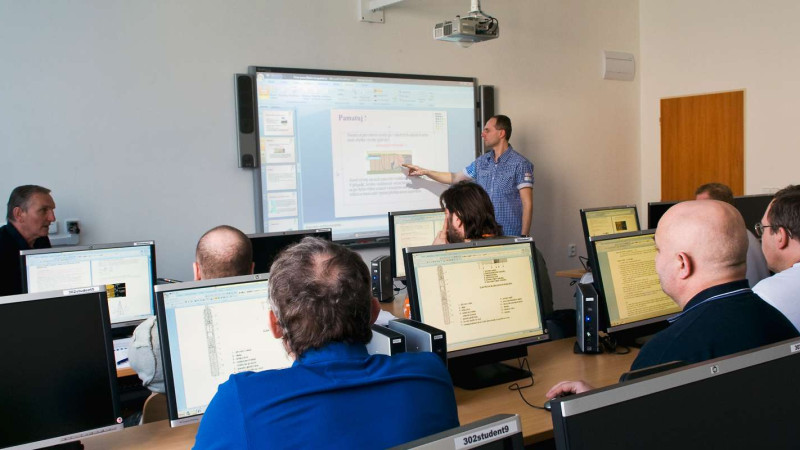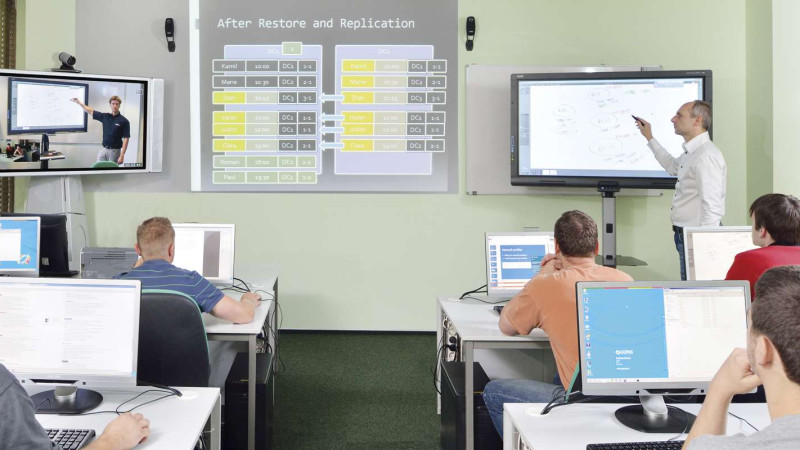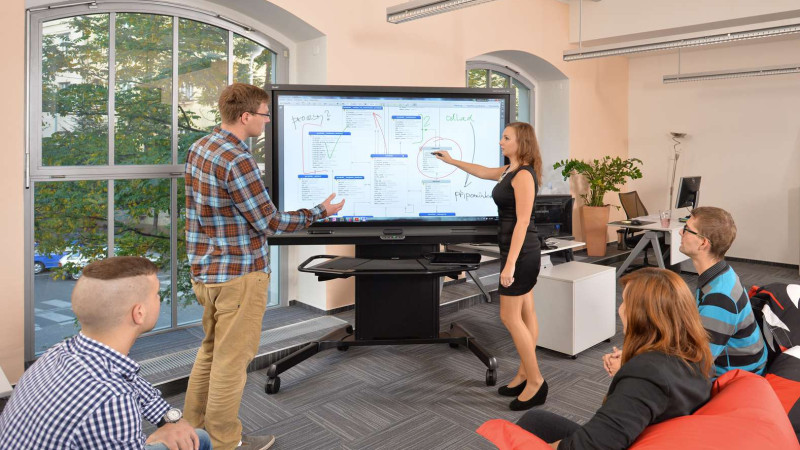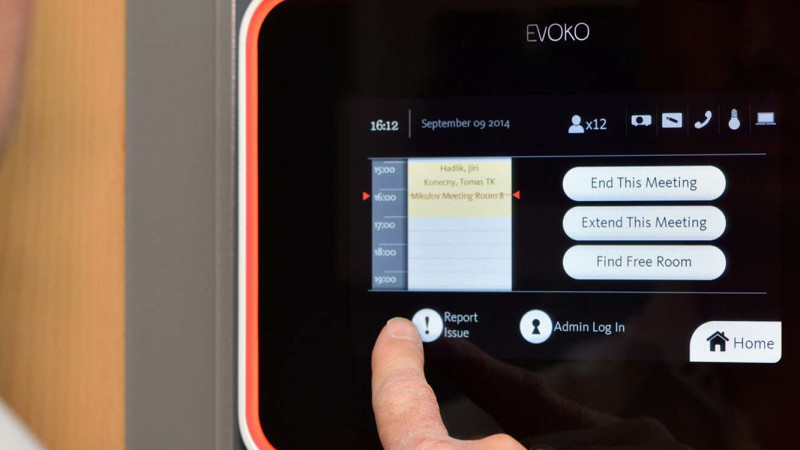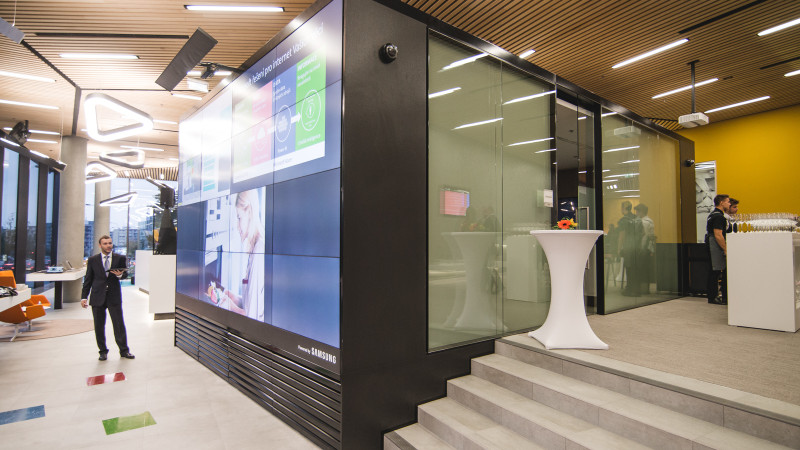
Collaboration in an architectural studio
Offices for architects should be a great environment for innovative and creative thinking because it’s a place where you meet people with different opinions and life experiences.
It’s the people themselves who have the energy to transform ideas into a phenomenal architectural study and these spaces should overflow with creativity, and not only for this reason alone.
It is essential to utilize the abilities of creative people these days – we need their eyes, brains, life experiences and especially their fresh ideas to continue to present ourselves as a successful studio, said Milan Veselý, CEO of Loxia, a.s. when opening the interview.
How to achieve this? Give co-workers the space for experimenting and support their success. It is true that we discover interesting original ideas during our experimental conditions and unexpected steps. In our newly designed workplaces, we use interactive SMART displays that positively influence team collaboration, the creative process, and active engagement between presenting and other meeting attendees.
“We use Interactive SMART displays as a digital flipchart for writing notes and sketches. The advantage of a digital flipchart is the creation
of a time recording, which can be returned to at any time and further modified with other context. The aim is to suggest several solutions that we can present afterwards. It’s best to look at problems from multiple points of view that can be drawn up in several variations.”
Ing. arch. Jana Mastíková, Architect
“If you have people around you who you can trust, it helps you achieve different insights because it expands your own thinking. This is more likely to happen if people perceive each other as friends. Not only for this reason, we’ve created a work environment with a friendly atmosphere that enables people to engage actively to meet new challenges like looking at a BIM (Building Information Model) from a new perspective.”
Ing. arch. Milan Veselý, CEO
Online sharing of digital content is another very interesting use of interactive content, consisting of technical documentation (Office applications and PDF documents) or 3D CAD applications (Autodesk Revit and ArchiCAD). Visual content stimulates the right brain hemisphere, which enhances creativity. In order to analyse all the spatial connections, the human brain creates a number of unique connections that make it easier to understand all the visual solutions that are proposed.
Changing your own behaviour and way of thinking while working is hard. In the past, we often visited customers with a ready-made PowerPoint presentation or printed paper drawings, on which we made simple comments and suggestions that we later transfer from the paper to the CAD application for further processing.
Changing the behaviour of others is even harder, while changing the behaviour of a group of people is ... well, it sometimes seems like a completely impossible thing. Yet, this has also changed, just like 25 years ago, when we had to move from wooden drafting logs to computer and CAD software applications.
These days, our work habits are complemented by a new way of working. While designing 2D/3D CAD visualizations on a computer, we are constantly shifting to interactive displays where we stand and present the content we have prepared, advocate for our studies, actively communicate and engage with our colleagues and customers, investors, suppliers and professional specialists. During the joint discussions, we draw digital comments and carry out change management directly into the applications being presented, which we immediately share with all stakeholders.
“Changing the way of thinking from the paper was tough but the benefits of interactive displays surpassed our original expectations. To avoid getting stuck in blind alleys, we had to compel people to stop thinking only in one linear direction until they understood the new opportunity. Thanks to the change in behavior and approach to work, we have reached the breakthrough when we managed to significantly improve our presentation,” concluded Jana Mastíková.
















